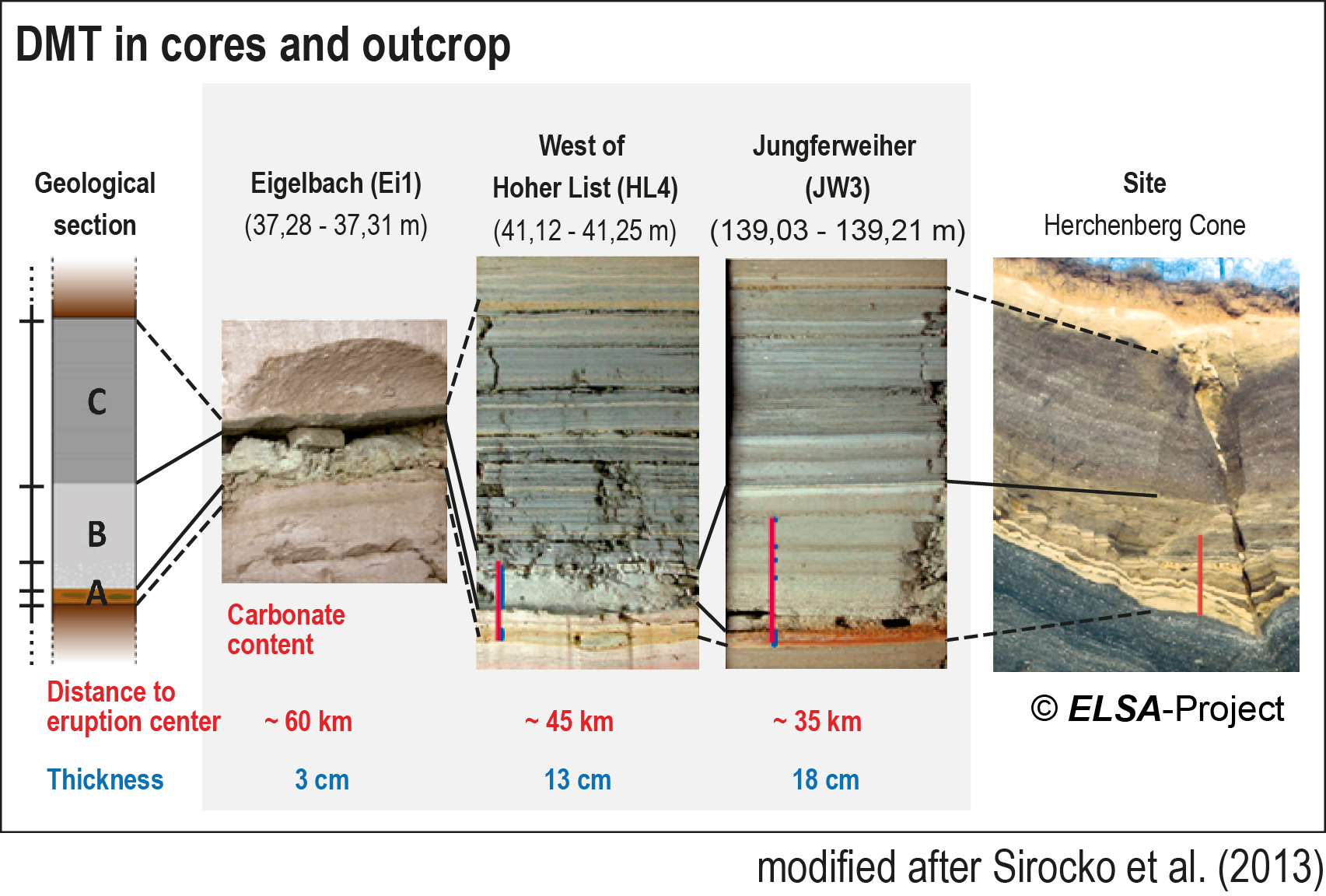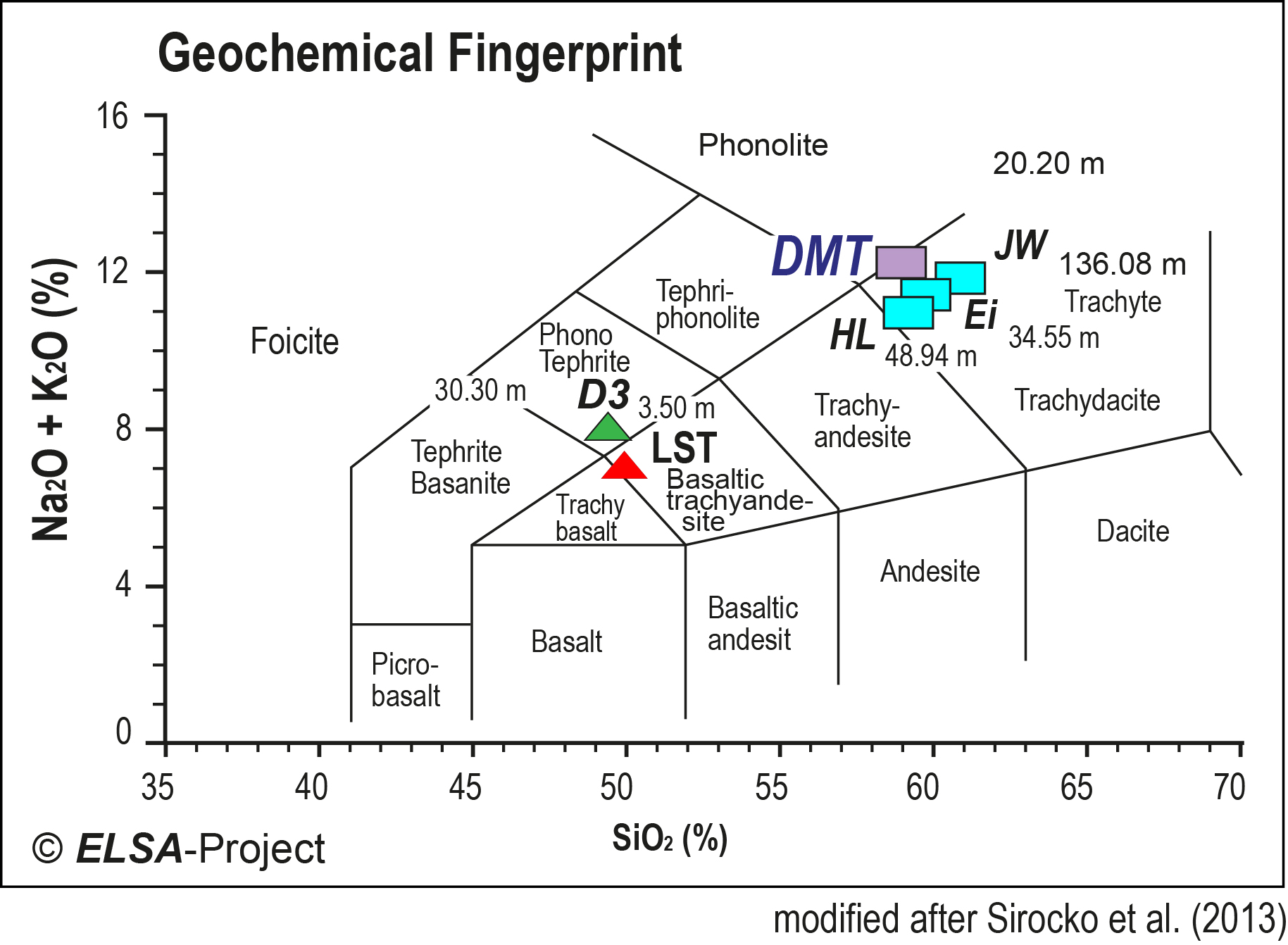Tephra (volcanic ash layers)
- ELSA-23 (0 – 130.000 BP) Tephra-Stack Data
- ELSA-23 (0 – 130.000 BP) Summary Plot Graphic
The ELSA-23-Tephra-Stack was recently published in the journal “Quaternary” by Sirocko et al. 2024, see reference list. We distinguish 14 tephra layers by their distinct petrographic and geochemical position; these tephra cover the entire last 130,000 years. These so called “marker tephra” are visible in all ELSA cores, which cover the respective time. Thus, these eruptions were strong and wind direction changed during the weeks of the eruption, so that the tephra was distributed over the entire Eifel as an at least cm thick layer. It is quite likely, that small eruptions can have produced additional ash layers, which become visible only in the immediate vicinity of the eruption, thus, mm thick layers at distance of more than a few kilometers. These thin ash layers are difficult to identify and will be a focus of future work. The marker tephra of Sirocko et al. (2024) with age and the respective depth in core are listed in the table and the fotos below.
The above figure shows that almost all tephra have occurred in the cold phases shortly before the major warmings of MIS1-5. In particular, all phreatomagmatic eruptions were associated with times of so-called Heinrich Events (C-events of MIS5), i.e. times of temperature rise on the southern hemisphere, global CO2 increase, and global sea level rise. The volcanic activity occurred in the centuries of the ice sheet decay or immediately after the resultant sharp warming at the begin of the subsequent Greenland interstadial. The Heinrich times are centuries of increased contrast between rising hydrospheric pressure on the oceanic plates and reduced ice pressure on the continents. The ELSA-23-Tephra stack shows that most volcanic eruptions were associated with these times of changes in the Earth and Ocean lithospheric stress field, i.e. the times of continental ice sheet decay.
Another potential relation between volcanism and ice sheet instability could be – in contrast to the above scenario- achieved if the millennium of the Heinrich Events would have been a time of increased heat flow from the Earth to the Atmosphere. In either case, the ELSA-23 Tephra-Stack is an expression of a geodynamic coupling between endogenic (inside the Earth) and exogenic (on the Earth surface) processes.
The tephra can be very easily distinguished by the sediment petrographic approach developed by Förster & Sirocko (2016) and updated by Sirocko et al. 2024. Typical minerals that can be sieved from the ash layers in the lake sediments.
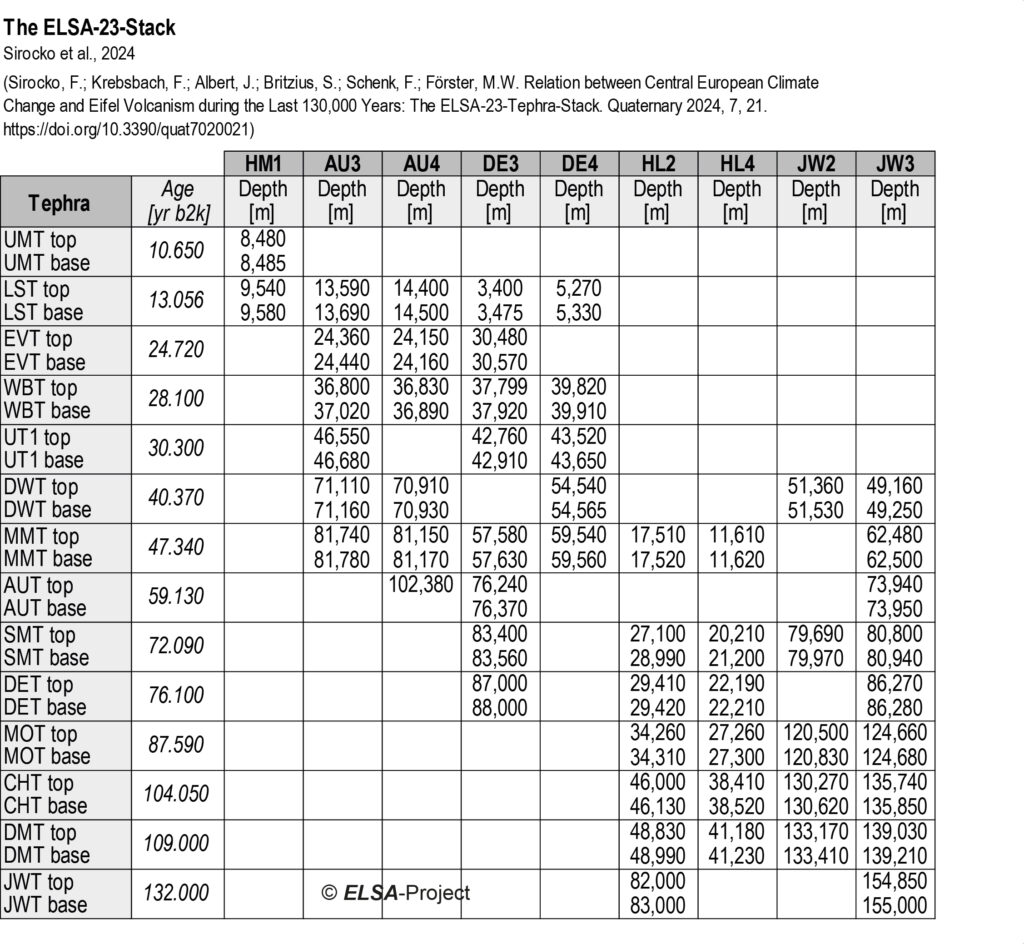
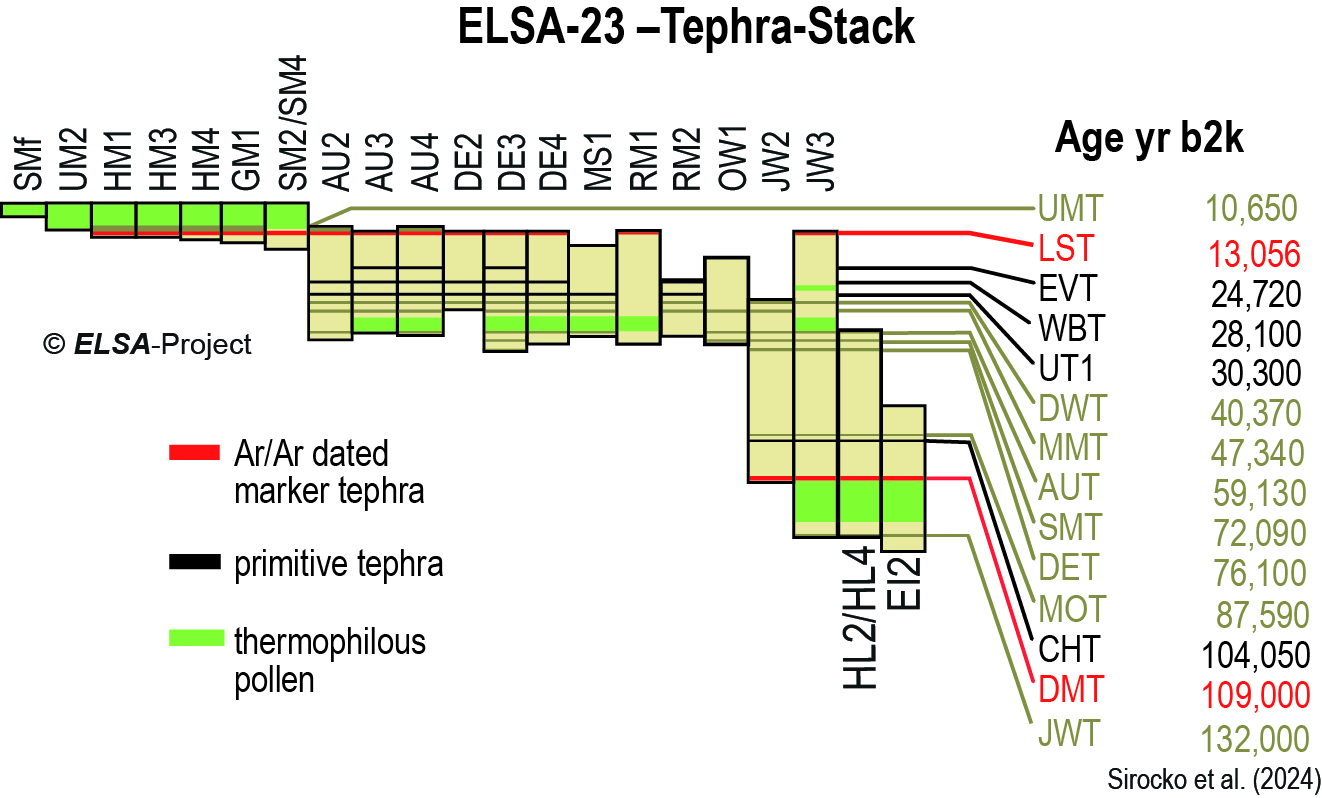
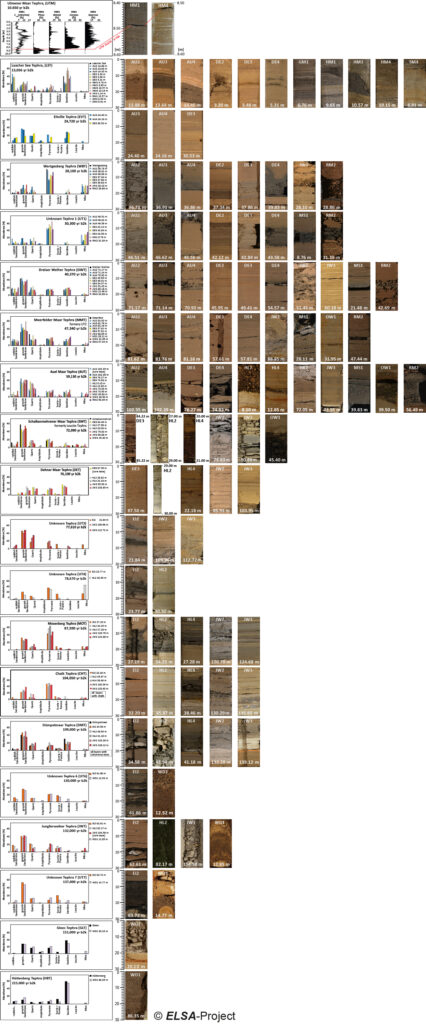
Tephra-related Papers
Sirocko, F., Krebsbach, F., Albert, J., Britzius, S., Schenk, F., Förster, M. W. (2024). Relation between Central Europe Climate Change and Eifel Volcanism during the Last 130,000 Years: The ELSA-23-Tephra-Stack. Quaternary 7(2): 21. doi: 10.3390/quat7020021
Schenk, F., Hambach, U. F., Britzius, S., Veres, D., Sirocko, F. (2024). A Cryptotephra Layer in Sediments of an Infilled Maar Lake from the Eifel (Germany): First Evidence of Campanian Ignimbrite Ash Airfall in Central Europe. Quaternary 7(2):17. doi: 10.3390/quat7020017
Fernández Arias, S., Förster, M. W., Sirocko, F. (2023). Rieden tephra layers in the Dottinger Maar lake sediments: Implications for the dating of the Holsteinian interglacial and Elsterian glacial. Global and Planetary Change, 227(2): 104143. doi: 10.1016/j.gloplacha.2023.104143
Förster, M.W., Zemlitskaya, A., Otter, L., Buhre, S. & Sirocko, F. (2019). Late Pleistocene Eifel eruptions: insights from clinopyroxene and glass geochemistry of tephra layers from Eifel Laminated Sediment Archive sediment cores. Journal of Quaternary Science 1-13. doi: 10.1002/jqs.3134
Förster, M.W. & Sirocko, F. (2016). Volcanic activity in the Eifel during the last 500 000 years: The ELSA-Tephra-Stack. Global and Planetary Change, Elsevier & Science direct. doi: 10.1016/j.gloplacha.2015.07.012


